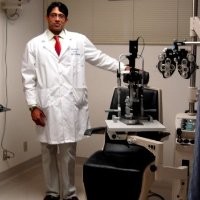A team of scientists at the University of Minnesota has pioneered a new visual diagnostic procedure that could pave the way for early detection of neurodegenerative diseases such as Parkinson’s. This innovative technique could also help identify similar diseases in animals, including Chronic Wasting Disease in deer. The findings are detailed in npj Biosensing, a scientific journal published by Nature.
The new technique is called Cap-QuIC, short for Capillary-enhanced Quaking-Induced Conversion. It enables researchers to identify infected samples with the naked eye, making testing more accessible and cost-efficient. This revolutionary method is a step forward from their previous diagnostic technique that offered faster and more precise disease detection.
According to Professor Hye Yoon Park, a senior co-author of the research and professor of electrical and computer engineering at the University of Minnesota, the simplicity and efficiency of Cap-QuIC could make routine screening for neurodegenerative diseases more commonplace. This could lead to earlier intervention and improved patient outcomes.
Parkinson’s disease is a neurodegenerative disorder that is characterised by the build-up of misfolded alpha-synuclein proteins in nerve cells in the brain. It affects millions globally and presents significant challenges in early diagnosis and treatment. Current diagnostic methods rely on observing external symptoms in clinical settings during advanced disease stages, which can limit potential therapeutic options. Early diagnosis often depends on delicate and costly equipment, making it less accessible in some regions, particularly in developing countries.
The breakthrough was credited to Peter Christenson, a postdoctoral researcher in electrical and computer engineering. Christenson noticed that the protein’s surface characteristics, which differ significantly between healthy and diseased states, influence its differential action.
Christenson said that the breakthrough moment came when he realised he could predict the status of each sample before using expensive equipment. This led to the development of the Cap-QuIC technique.
The team demonstrated that they could use glass capillaries, small test tubes designed to hold biological materials, to distinguish between normal and disease-associated proteins by observing differences in liquid movement within the tubes.
Notably, this method could also speed up the diagnosis of other similar diseases, including Chronic Wasting Disease in deer, according to Peter Larsen, an associate professor of veterinary and biomedical sciences at the College of Veterinary Medicine.
The team tested Cap-QuIC on tissues from wild white-tailed deer infected with Chronic Wasting Disease and found that it could classify samples with high sensitivity and specificity.
Professor Sang-Hyun Oh, a senior co-author of the paper, said that this new way of detection represents a significant advancement in neurodegenerative disease diagnostics. By simplifying the process, there’s potential for earlier diagnosis of Parkinson’s disease, which is key to effective management and treatment.
The Minnesota Center for Prion Research and Outreach (MNPRO), led by Larsen and Oh, brings together faculty and external team members from various disciplines to study protein misfolding diseases like Alzheimer’s, Parkinson’s, Chronic Wasting disease, and ALS.


Comments are closed for this post.